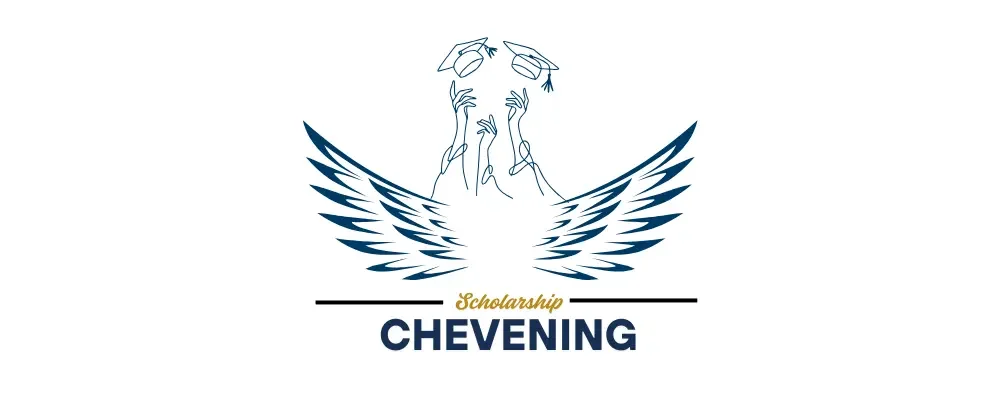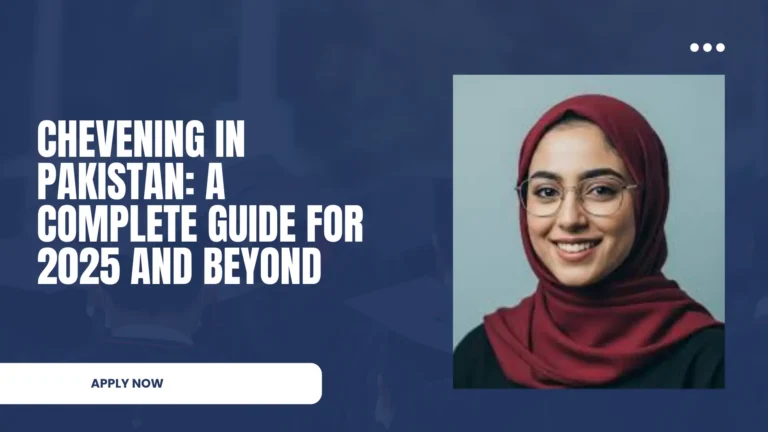How to Demonstrate Leadership Potential for Chevening Scholarship: Your Complete Guide
Picture this: You’re sitting in front of your laptop at 2 AM, staring at that intimidating Chevening application form. The cursor blinks mockingly at the “leadership potential” section. You’ve got the grades, the work experience, the dreams—but how on earth do you prove you’re a future leader?
I’ve been there. And I’m here to tell you something important: leadership potential isn’t about being the loudest person in the room or having “CEO” in your job title. It’s something far more nuanced, far more authentic—and yes, far more achievable than you think.
Let’s crack this code together.
What Does “Leadership Potential” Actually Mean for Chevening?
Before we dive into the how, let’s get crystal clear on the what.
The Chevening scholarship leadership criteria isn’t looking for superheroes or politicians-in-training. They’re searching for people who can influence, inspire, and create meaningful change in their communities and countries. Think of it as your ability to make things happen—with or without a fancy title.
Here’s what Chevening really wants to see:
- Initiative: You spot problems and actually do something about them
- Influence: People listen when you speak (and not just because you’re loud)
- Impact: Your actions create ripples that extend beyond your immediate circle
- Vision: You can see the bigger picture and help others see it too
The Chevening leadership potential meaning goes deeper than traditional hierarchical leadership. It’s about your capacity to grow, adapt, and eventually shape the future of your field or country.
The Three Pillars of Chevening Leadership Assessment
When Chevening evaluates your leadership potential, they’re essentially asking three fundamental questions:
- Have you led before? (Your track record)
- Can you lead effectively? (Your skills and qualities)
- Will you lead in the future? (Your potential and vision)
Miss any of these pillars, and your application might feel incomplete—like a three-legged stool with one leg missing.
Understanding the Chevening Leadership Criteria
Let’s break down what the selection committee actually looks for. I’ve analyzed countless successful applications, and here’s the pattern that emerges:
Core Chevening Leadership Qualities
| Leadership Quality | What It Looks Like | Why It Matters |
|---|---|---|
| Vision | You can articulate where you want to go and why | Shows strategic thinking |
| Communication | You explain complex ideas simply | Essential for influence |
| Resilience | You bounce back from setbacks | Predicts long-term success |
| Empathy | You understand others’ perspectives | Creates authentic connections |
| Decisiveness | You make tough calls when needed | Demonstrates confidence |
| Adaptability | You pivot when circumstances change | Shows modern leadership |
But here’s the thing—you don’t need to be perfect at all of these. You need to be genuinely strong in a few and show awareness of where you’re growing.
Powerful Chevening Leadership Examples That Actually Work
Alright, let’s get practical. What does good leadership actually look like in a Chevening application?
Example 1: Community Leadership Examples for Chevening
Weak Example: “I was president of my university’s debate club and organized meetings.”
Strong Example: “When I noticed our debate club had become an echo chamber of the same five voices, I launched ‘First Speakers’—a mentorship program pairing experienced debaters with newcomers from underrepresented backgrounds. Within six months, our active membership doubled, and three mentees won regional competitions. More importantly, our club became a space where diverse perspectives weren’t just welcomed—they were celebrated.”
See the difference? The strong example shows:
- A problem you identified
- Initiative you took
- Measurable impact
- Values alignment
Example 2: International Leadership Examples for Chevening Applicants
Weak Example: “I worked on an international project with colleagues from different countries.”
Strong Example: “Managing a cross-cultural team of engineers across Pakistan, Kenya, and Brazil taught me that leadership isn’t about imposing your way—it’s about creating a shared vision. When timezone conflicts threatened our product launch, I redesigned our workflow around asynchronous collaboration and cultural flexibility. We not only met our deadline but created a model that my company now uses globally.”
This example demonstrates:
- Cross-cultural competence
- Problem-solving innovation
- Scalable impact
- Adaptability
Example 3: Leadership Impact Examples
Here’s a truth bomb: Chevening doesn’t care if you led 5 people or 500. They care about the depth and sustainability of your impact.
Consider this framework for showcasing your leadership impact:
- Before: What was the situation?
- Barrier: What was preventing progress?
- Bold Action: What did you do differently?
- Breakthrough: What changed as a result?
- Beyond: How did the impact extend beyond the immediate situation?
How to Write the Leadership Potential Section of Your Chevening Essay
Now, let’s talk about actually writing this beast of an essay. The Chevening leadership potential essay is where many strong candidates stumble—not because they lack leadership experience, but because they don’t know how to frame it effectively.
Chevening Leadership Essay Tips That Actually Help
Tip #1: Start With Your “Leadership Origin Story”
Don’t just list achievements. Take me on a journey. When did you first realize you could make things happen? Maybe it was organizing your neighborhood to fix a broken playground, or speaking up when everyone else stayed silent in a meeting.
Your opening should be specific, vivid, and memorable. Like this:
“The turning point came when I watched my grandmother struggle to access basic healthcare information in our rural village. At 23, I didn’t have money or political connections. But I had a smartphone, social media skills, and an unshakeable belief that information shouldn’t be a privilege.”
Tip #2: Use the STAR Method (But Make It Interesting)
Yes, Situation-Task-Action-Result is a classic framework. But please, don’t make it boring. Weave your STAR examples into compelling narratives.
Instead of: “Situation: Our department had low morale. Task: Improve team engagement. Action: Started monthly meetings. Result: Engagement increased 20%.”
Try: “Morale in our department had hit rock bottom—I could feel it in the silent lunch breaks and the growing sick leave requests. Rather than another top-down initiative, I started ‘Coffee Roulettes’—randomized 15-minute coffee chats between colleagues who’d never spoken. What began as a simple experiment evolved into our department’s most valued tradition, cutting voluntary turnover by 20% and, more importantly, rebuilding the human connections we’d lost.”
Tip #3: Show Evolution, Not Perfection
One of the most powerful things you can do is show how your understanding of leadership has evolved. Maybe you used to think leadership meant having all the answers. Now you know it means asking better questions. Share that growth.
Writing a Leadership Vision Statement for Chevening
Your leadership vision isn’t a generic “I want to make the world better” statement. It needs to be:
- Specific: Tied to your field and country context
- Achievable: Ambitious but grounded in reality
- Personal: Connected to your unique background and experiences
- Actionable: Clear on your role in making it happen
Example of a compelling vision statement:
“Having witnessed how climate misinformation paralyzed policy-making in my country, I envision myself as a bridge between scientific research and public understanding. Through strategic communication and stakeholder engagement, I aim to lead initiatives that translate complex climate data into actionable policies that protect vulnerable communities—starting with coastal regions in Southeast Asia and expanding to regional climate coalitions.”
Developing Leadership Skills to Boost Your Chevening Application
Let’s be real—if you’re reading this and thinking “But I don’t have enough leadership experience,” you’re not alone. The good news? Leadership skills can be developed, and Chevening knows this.
Chevening Leadership Skills You Can Build Right Now
1. Strategic Thinking
You don’t need an MBA to think strategically. Start by:
- Reading beyond your field (seriously, read diverse sources)
- Asking “Why?” three times for every situation
- Connecting dots that others miss
2. Influence Without Authority
This is the secret sauce of modern leadership. Practice:
- Building coalitions around shared goals
- Understanding stakeholder motivations
- Using data and stories in combination
3. Resilience and Adaptability
Leadership isn’t linear. Show how you’ve:
- Learned from failures (be specific)
- Pivoted when plans fell apart
- Maintained vision during uncertainty
Chevening Leadership Development Opportunities
While preparing your application, consider:
| Opportunity | Leadership Skills Developed | Time Investment |
|---|---|---|
| Volunteer Coordination | Team management, communication | 2-4 hours/week |
| Cross-functional Projects | Stakeholder management, adaptability | Varies |
| Mentorship (Giving or Receiving) | Empathy, coaching, vision-setting | 1-2 hours/week |
| Community Initiative | Problem-solving, resource mobilization | 3-5 hours/week |
| Professional Association Leadership | Networking, influence, strategic planning | 2-3 hours/week |
Addressing Common Chevening Leadership Potential Challenges
Let’s tackle the elephants in the room—the challenges that keep applicants up at night.
Challenge #1: “I Don’t Have a Leadership Title”
Solution: Leadership and management are different things. Some of the most powerful leadership happens informally. Did you:
- Mentor junior colleagues without being asked?
- Take initiative on a project no one else wanted?
- Bridge communication gaps between teams?
- Advocate for change when others stayed silent?
Those are leadership moments. Own them.
Challenge #2: “My Leadership Experience Seems Too Small”
Solution: Scale isn’t everything—depth is. Leading a team of 3 people to achieve something meaningful beats managing 30 people poorly. Focus on:
- The quality of your impact
- The obstacles you overcame
- The innovation you brought
- The sustainability of your changes
Challenge #3: “How Do I Balance Confidence Without Sounding Arrogant?”
Solution: Be specific and give credit. Instead of “I single-handedly transformed the organization,” say “By building on my predecessor’s foundation and leveraging my team’s diverse skills, we collectively achieved X.”
Confidence + Specificity + Humility = Compelling Narrative
Chevening Leadership Potential Interview Questions You Might Face
If you make it to the interview stage (fingers crossed!), here’s what you should prepare for:
Top Leadership Questions for Chevening Interviews
Q: “Tell us about a time your leadership failed.”
This is not a trick question—it’s a gift. They want to see:
- Self-awareness
- Growth mindset
- Resilience
Structure your answer: What happened → What you learned → How you applied that lesson later
Q: “How do you handle team members who disagree with your direction?”
Show that you see disagreement as valuable, not threatening. Discuss:
- Your listening approach
- How you evaluate different perspectives
- When you change course vs. when you hold firm
Q: “Where do you see yourself in 10 years?”
This is where your leadership vision comes alive. Be ambitious but authentic. Connect your answer to:
- Your country’s needs
- Your field’s evolution
- Your unique contribution
How Chevening Evaluates Leadership Potential
Understanding the evaluation process helps you prepare strategically. Here’s what happens behind the scenes:
The Chevening Leadership Assessment Process
- Application Stage: Written responses scored by trained assessors
- Reference Stage: Leadership validation from external sources
- Interview Stage: Live demonstration of leadership qualities
- Final Selection: Holistic review by the selection committee
At each stage, they’re asking: “Is this person a future influencer in their country?”
What Chevening Groomed Leaders Look Like
Look at Chevening alumni profiles. Notice the pattern? They’re:
- Working at the intersection of multiple sectors
- Bridging gaps (cultural, institutional, knowledge)
- Innovating within traditional structures
- Mentoring the next generation
- Staying connected to their communities
This isn’t coincidence—it’s what Chevening selects for.
Checklist for Demonstrating Leadership Potential in Chevening
Let’s make this actionable. Here’s your pre-submission checklist:
Content Checklist:
- [ ] Included at least 3 specific leadership examples
- [ ] Demonstrated both formal and informal leadership
- [ ] Showed impact with concrete evidence (numbers, testimonials, outcomes)
- [ ] Connected leadership to your country’s needs
- [ ] Articulated a clear leadership vision
- [ ] Acknowledged learning from challenges
- [ ] Varied the types of leadership (team, community, professional)
Writing Quality Checklist:
- [ ] Each paragraph has a clear purpose
- [ ] Examples are vivid and memorable
- [ ] Avoided clichés and generic statements
- [ ] Used active voice and strong verbs
- [ ] Balanced confidence with humility
- [ ] Stayed within word limits
- [ ] Proofread thoroughly (or had someone else do it)
Strategic Checklist:
- [ ] Aligned examples with UK study plans
- [ ] Demonstrated understanding of UK context
- [ ] Showed commitment to returning home
- [ ] Connected leadership to career trajectory
- [ ] Referenced Chevening values subtly
Real Success Stories: Inspiring Chevening Leaders
Let me share some patterns from successful applicants (details anonymized):
The Healthcare Innovator: Started with organizing health camps in rural areas, evolved to designing policy recommendations adopted by regional government. Leadership shown through: grassroots engagement + policy influence + sustainable impact.
The Tech Bridge-Builder: Led efforts to increase women’s participation in tech, created mentorship network spanning 5 countries. Leadership shown through: identifying systemic barriers + building coalitions + creating scalable solutions.
The Environmental Advocate: Transformed university’s waste management while lobbying local government for better recycling infrastructure. Leadership shown through: multi-stakeholder engagement + persistence through bureaucracy + measurable environmental impact.
Notice what these stories share? They all demonstrate leadership that:
- Starts with genuine problem identification
- Involves mobilizing others
- Creates lasting change
- Connects individual to systemic impact
Frequently Asked Questions About Chevening Leadership Potential
Q: What if my leadership experience is all from volunteering, not my job?
A: That’s perfectly fine. Chevening values authentic leadership regardless of context. Volunteer leadership often demonstrates even stronger commitment because you’re doing it without career incentives.
Q: Should I focus on one major leadership achievement or several smaller ones?
A: Use a mix. One major achievement shows depth and sustained impact. Several smaller examples show versatility and consistent leadership behavior.
Q: How recent should my leadership examples be?
A: Prioritize recent examples (last 3-5 years), but if an earlier experience was truly formative and connects to your current trajectory, include it—just frame it as part of your evolution.
Q: Can I include leadership from university if I’ve been working for several years?
A: Use university examples sparingly if you have significant work experience. They can work as “origin story” material but shouldn’t dominate your narrative.
Q: What if I work in a very junior position?
A: Leadership isn’t about seniority. Focus on initiative, influence among peers, and impact within your scope. Some of the best examples come from people who led without authority.
Tips to Enhance Your Leadership Potential for Chevening
As you prepare your application, keep these final insights in mind:
The 5 Ps of Compelling Leadership Narratives
- Personal: Make it about your unique journey
- Purposeful: Every example should prove a point
- Specific: Details create credibility and engagement
- Progressive: Show growth and evolution
- Prospective: Connect past to future vision
Common Mistakes to Avoid
❌ Using corporate jargon: “Leveraged synergies to optimize outcomes” ✅ Being human: “Brought together unlikely partners to solve a stubborn problem”
❌ Listing responsibilities: “Managed a team of 10” ✅ Showing impact: “Built a team culture where junior members felt empowered to challenge senior decisions—leading to our most innovative solution”
❌ Being vague: “Made significant improvements” ✅ Being specific: “Reduced processing time from 3 weeks to 5 days, affecting 200+ stakeholders monthly”
Your Next Steps: From Reading to Doing
Alright, you’ve made it to the end. Here’s what you should do right now—yes, right now:
- Brainstorm Session (20 minutes): List every time you’ve influenced an outcome, led a project, or taken initiative. Don’t filter yet—just capture.
- Impact Mapping (15 minutes): For each experience, answer: Who was affected? What changed? How do you know?
- Pattern Recognition (10 minutes): Look at your list. What themes emerge? What makes you uniquely you as a leader?
- Story Selection (30 minutes): Choose your 3-5 strongest examples that show different facets of leadership.
- Draft Your Vision (20 minutes): Write a rough version of where you see yourself in 10 years and how Chevening fits that journey.
Final Thoughts: Leadership Is Your Story, Not a Template
Here’s what I want you to remember as you craft your Chevening application: The selection committee has read thousands of applications. They can spot authenticity—and inauthenticity—from a mile away.
Your leadership potential isn’t something you need to manufacture or exaggerate. It’s already there in your experiences, your values, and your vision for the future. Your job is simply to articulate it clearly, compellingly, and honestly.
The best Chevening applications I’ve seen aren’t from people with the most impressive titles or the longest lists of achievements. They’re from people who genuinely understand themselves as leaders—flaws, growth areas, and all—and who can articulate a vision for how they’ll use their leadership to create meaningful change.
You’ve got this. Now go write an application that shows them exactly who you are and who you’re becoming.
And hey, when you get that Chevening acceptance email, remember this moment. Remember that leadership isn’t about being perfect—it’s about being purposeful.
Ready to strengthen your Chevening application? Save this guide, share it with fellow applicants, and start crafting your leadership narrative today. Your future is waiting—go lead toward it.







